Originating from the 17th century, Cardinal Scipione Borghese, nephew of Pope Paul V, began collecting the art of the ancient world, a collection that is known today as the Borghese Collection housed in the Borghese Gallery. Established in 1903, the museum now accommodates an extensive collection of ancient mosaics, basreliefs and sculptures, as well as fifteenth to 19th-century paintings and sculptures. Within the museum’s 20 rooms, visitors can find sculptures by Canova and Gian Lorenzo Bernini and the works of artists such as Caravaggio, Tiziano, Correggio, Raphael, Giovanni Bellini and Antonello da Messina.
What to see
Young Women with Unicorn
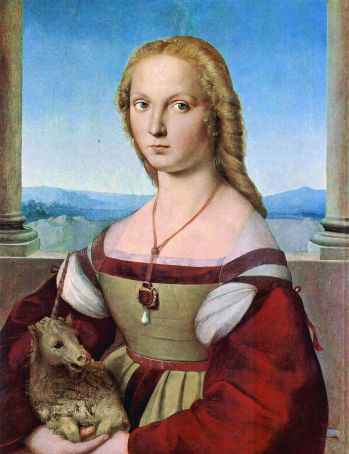
Imagine “Young Women with Unicorn,” but instead of flashing her bare shoulders, this young woman wears a shawl. Instead of holding a unicorn, a broken wheel and a palm leaf are placed in her lap. Once believed to be a portrait of Saint Catherine of Alexandria, Raphael’s 17th century oil painting on panel was changed nearly a hundred years after its original completion. In 1934, x-rays revealed the truth under the overlay. Restorations transferred the painting from panel to canvas, and the vandalization was removed. Today, the Borghese Gallery proudly displays Raphael’s mysterious portrait, in its original form.
The Rape of Proserpina
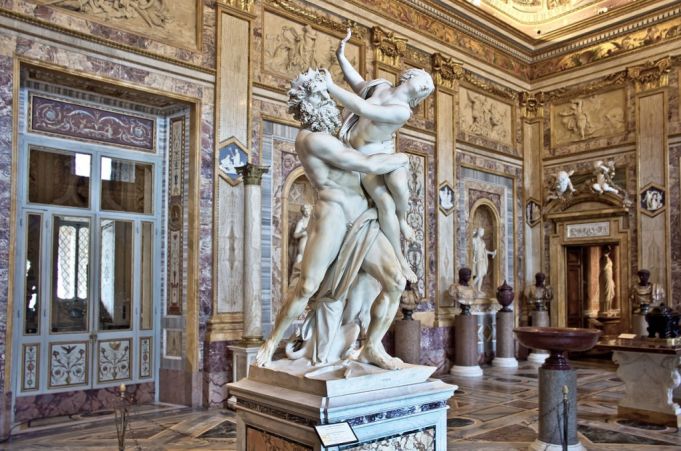
In the 17th centruy, Bernini sculpted his “The Rape of Proserpina” out of marble. The sculpture depicts Pluto’s abduction of Proserpina, as he drags her from the shores of Lake Pergusa to Hades. Cerberus, the three-headed dog and protector of the Under World, snarls, as he sits waiting for them. Determined to make her his wife, Pluto’s hands dig into her struggling body, as Proserpina fights against his grip. A contorted expression of grief and fear contracts her face, while a single tear runs down her cheek. Details, such as these, make Bernini’s sculpture a masterful piece of art that has fascinated observers for centuries.
Deposition
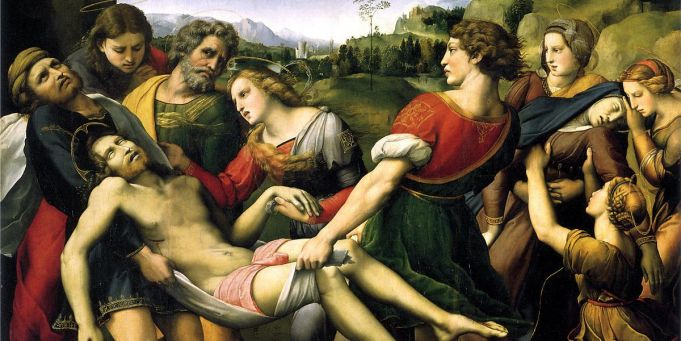
When Grifonetto Baglioni was murdered by Gentile Baglioni, in the midst of 16th centruy Italian gang violence, Grifonetto’s mother employed Raphael to create “Deposition,” in her son’s honor. This painting narrates the final days of the life of Jesus Christ. In this painting, Raphael depicts the battered body of Christ, as he is removed from the crucifix and transported to his tomb. Grifonetto is believed to be the young boy carrying Christ. Walking aside Grifonetto are Saint John and Mary Magdalene. The Virgin Mary is also depicted in the scene. She appears to have fainted. A group of onlookers struggle to support her limp body.
Apollo and Daphne
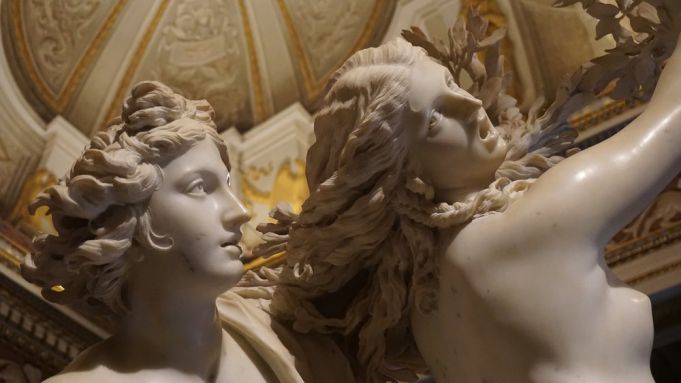
In the 17th century, Bernini captured the story of Apollo and Daphne in marble. This moment of this mythological tale shows Apollo’s fruitless love for Daphne. Resenting his consistent advances, Daphne runs from Apollo. When he catches her, Daphne’s fate is sealed, as she morphs into a laurel tree. “Apollo and Daphne” is a snapshot of this story. Both characters appear to still be in motion, as Apollo’s garment flies behind him and with Daphne’s hair flung over her shoulder. However, with Apollo’s hand wrapped around Daphne’s torso, she begins her transformation. Her toes grow roots, and her legs form a trunk. Leaves spring from her finger tips and hair. Daphne’s face exposes her shock, while Apollo looks onto her with a certain longing.
David with the Head of Goliath
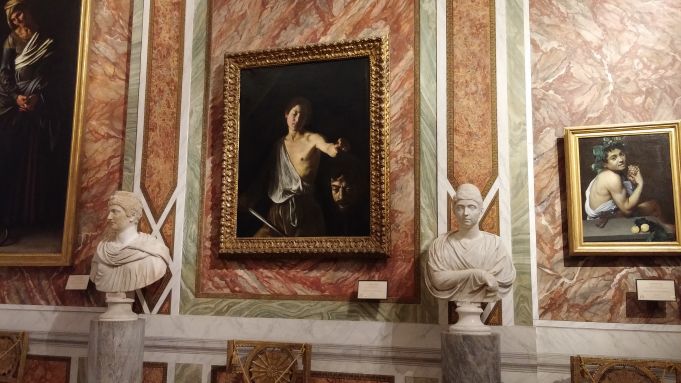
At the beginning of the 17th century, Caravaggio was accused of murder, fleeing Rome to escape his fate. These events led to the creation of “David with the Head of Goliath,” a macabre self-portrait. In this painting, Caravaggio depicts the head of Goliath, as himself, being held by his executioner David. This unsettling scene shows a grieving David burdened by the allocation of justice. In his right hand, the youth holds a sword. In his left hand, he holds the bruised, severed head of Goliath. Blood streams from his neck, and his lifeless eyes create a morbid focal point on his face. Caravaggio hoped that this painting would be enough to pardon him from the alleged crime. His efforts proved advantageous, and he was pardoned. However, the news did not reach Caravaggio, before he died 1610.
Also Read:
- Best day trips from Rome
- 29 Best Things To Do in Rome
- Top 10 beaches near Rome
- Visiting Castel Sant’Angelo, Rome's Castle
- Visiting the Roman Forum
- How to buy tickets for the Vatican Museum
- Hadrian's Villa in Tivoli
- All you need to know about Piazza Navona
- The Trevi Fountain: A Brief History
Entrance and Tickets
These are only five of the thousands of works contained in the Borghese Gallery. In order to see the entire displayed collection, reservations are required and all tickets must be purchased in advance. Due to security reasons, all visits have a strict two-hour limit, and all visitors must leave once the shift is up.
Buy your ticket hereg(21237920)a(2991162))
General Info
View on Map
How to visit Galleria Borghese in Rome
Piazzale Scipione Borghese, 5, 00197 Roma RM, Italy




















